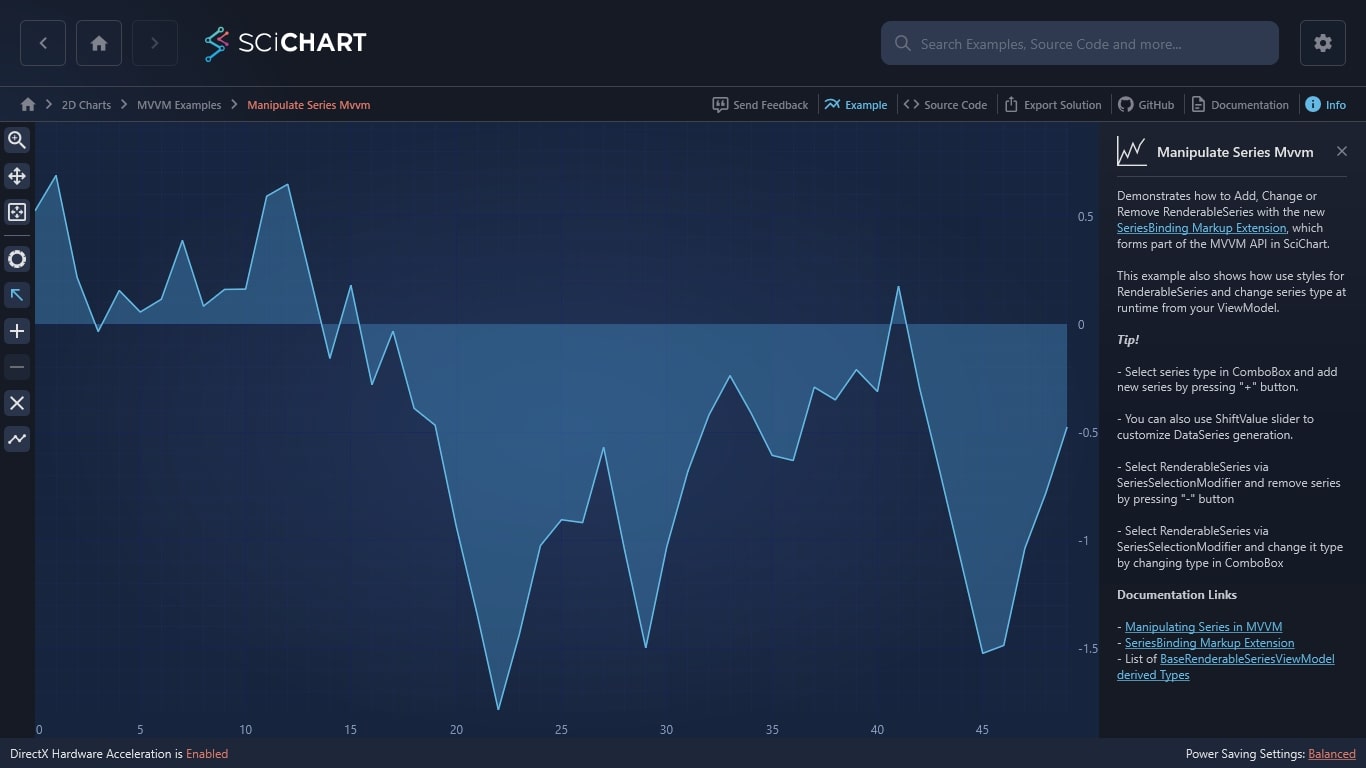WPF Chart - Examples
SciChart WPF ships with hundreds of WPF Chart Examples which you can browse, play with, view the source-code and even export each WPF Chart Example to a stand-alone Visual Studio solution. All of this is possible with the new and improved SciChart WPF Examples Suite, which ships as part of the SciChart WPF SDK.
Demonstrates how to Add, Change or Remove RenderableSeries with the new SeriesBinding Markup Extension, which forms part of the MVVM API in SciChart.
This example also shows how use styles for RenderableSeries and change series type at runtime from your ViewModel.
Tip!
– Select series type in ComboBox and add new series by pressing “+” button.
– You can also use ShiftValue slider to customize DataSeries generation.
– Select RenderableSeries via SeriesSelectionModifier and remove series by pressing “-” button
– Select RenderableSeries via SeriesSelectionModifier and change it type by changing type in ComboBox
Documentation Links
– Manipulating Series in MVVM
– SeriesBinding Markup Extension
– List of BaseRenderableSeriesViewModel derived Types
The C#/WPF source code for the WPF Chart Manipulate Series MVVM example is included below (Scroll down!).
Did you know you can also view the source code from one of the following sources as well?
- Clone the SciChart.WPF.Examples from Github.
- Or, view source in the SciChart WPF Examples suite.
- Also the SciChart WPF Trial contains the full source for the examples (link below).


